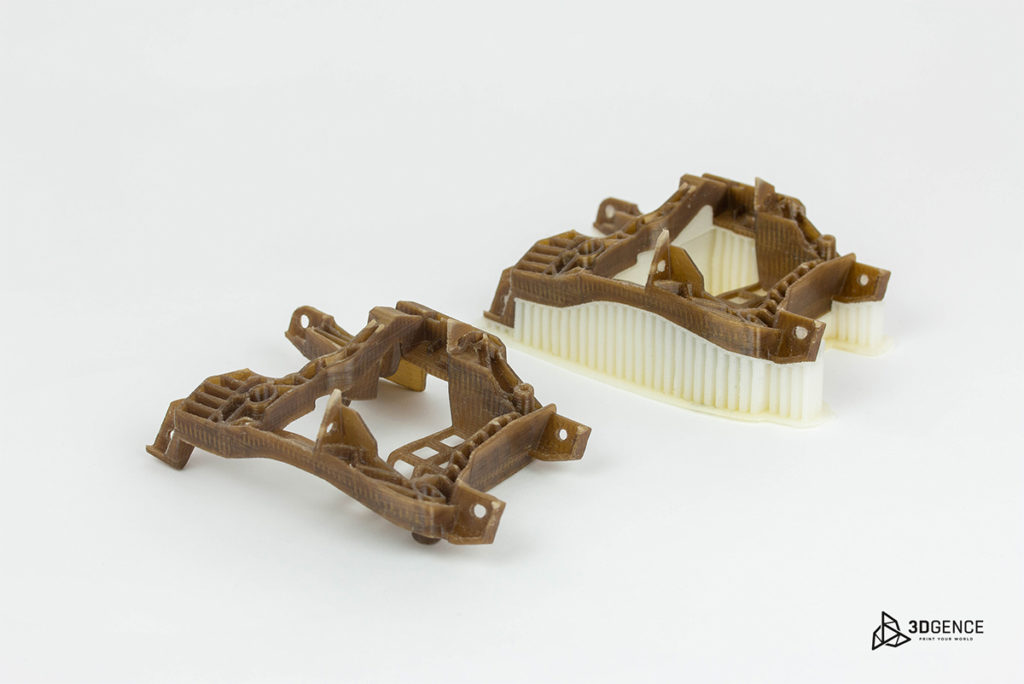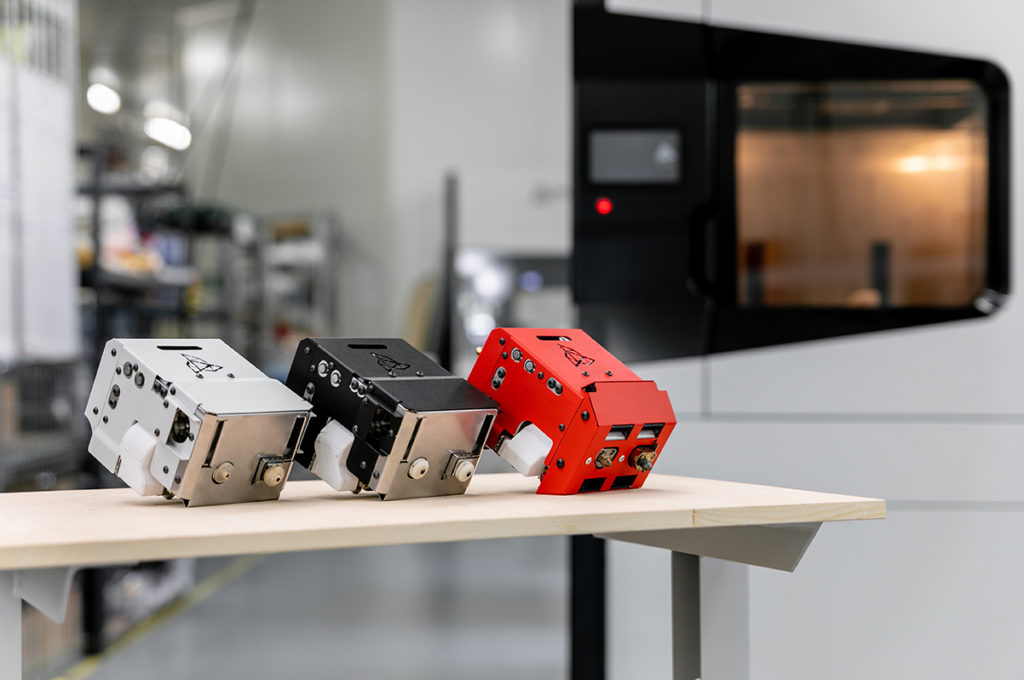Ron Faruqui is the Americas President of Polish high-temperature FDM 3D printer manufacturer 3DGence. 3DGence came out of nowhere a few years ago with a capable high-temperature machine. Further refinements in successive models have placed them near the top of highly reliable high-temperature 3D printer manufacturers worldwide. The ability to print members of the PAEK family means that users of high-temperature 3D printers can print parts with high continuous service temperatures, good chemical resistance and high stiffness and strength. Materials such as PEEK and PEKK can be used to replace certain metal parts and because they are inherently flame retardant and have low flame smoke and toxicity they can be used in demanding applications in aerospace along with materials such as PEI. Meanwhile, PEEK and PEKK can be biocompatible meaning that, if one gets the regulatory approval and changes these printers somewhat, one could use them to print implants. Because high-temperature machines need high-temperature nozzles, chambers and build plates to print high-performance materials they are more expensive than regular FDM machines. However, these machines’ excellent control over thermal bleed means that they’re very good printers for other tricky materials such as PA and warp prone materials such as ABS as well. To me a narrow band of firms are making the production systems of the future for a lot of manufacturing and 3DGence is (along with Intamsys, Roboze, Minifactory, 3ntr, and AON) one of those firms.

Ron is busy rolling out 3DGence in North America. He believes that features such as “heated material chamber where four spools can be kept in optimal condition” while “if a spool runs out, another bay with material will finish the print” and “soluble supports for PEKK” are the features clients are looking for. Additionally, “we have flow control sensors on the extruder that can tell you if your filament is tangled” and “interchangeable print modules for different materials.” One feature I really liked was that the team had made a metal column underneath the build plate which meant that this unnecessary area was reduced and the printer would heat up faster using less energy.

Ron says, “3DGence’s focus is on industrial” and that they will, “continue to bring features that increase the total value to the customer..and that TCO is the focus.” Now they are “very active with material partners and..getting involved in the development stage of new materials.” “Yes, 3DGence is open but profiles are important and we want to test materials…keep materials at or at below the market price.”
Ron sees the US market as different than the European one. “In the States it is more D than the R in R&D” so “customers are different” and “expect a total solution.” At the moment this means that Ron is very hands-on, his sales engineer and he, “we both are at every instrallation., and make sure it prints well before we leave that day..we’re establishing the brand.” This level of “technical support…enhances adoption..and through customer contact..we can know our market..the work is not done until the customer has stopped calling.” Such a hands-on approach lets them “learn how to better support resellers..learn how to make a better product…know how to improve software and do custom profile development.” In turn that “lets us develop better channel strategy and segment strategy…while helping the customer adopt the technology…from concept to prototype to part.” He says “we’re not trying to sell 3D printers..we want customers to get real parts into production.”

Their customers now are comprised of “military contractors, maintenance firms, OEM manufacturers of machines and industrial companies” who are making “replacement parts..end-use parts, accessories such as clips and things and prototypes.” He sees many as “moving towards production” while few are “knee-deep in production” but most struggle in “getting the design right.” Ron believes in “the evolution of additive manufacturing..and a phased approach to adopting 3D printing” with the “rapid customization being the end goal.” With the new “F420 we want to build on previous efforts and bring a versatile industrial machine to the market” with a “focus on productivity.”
Subscribe to Our Email Newsletter
Stay up-to-date on all the latest news from the 3D printing industry and receive information and offers from third party vendors.
Print Services
Upload your 3D Models and get them printed quickly and efficiently.
You May Also Like
Reinventing Reindustrialization: Why NAVWAR Project Manager Spencer Koroly Invented a Made-in-America 3D Printer
It has become virtually impossible to regularly follow additive manufacturing (AM) industry news and not stumble across the term “defense industrial base” (DIB), a concept encompassing all the many diverse...
Inside The Barnes Global Advisors’ Vision for a Stronger AM Ecosystem
As additive manufacturing (AM) continues to revolutionize the industrial landscape, Pittsburgh-based consultancy The Barnes Global Advisors (TBGA) is helping shape what that future looks like. As the largest independent AM...
Ruggedized: How USMC Innovation Officer Matt Pine Navigates 3D Printing in the Military
Disclaimer: Matt Pine’s views are not the views of the Department of Defense nor the U.S. Marine Corps Throughout this decade thus far, the military’s adoption of additive manufacturing (AM)...
U.S. Congress Calls Out 3D Printing in Proposal for Commercial Reserve Manufacturing Network
Last week, the U.S. House of Representatives’ Appropriations Committee moved the FY 2026 defense bill forward to the House floor. Included in the legislation is a $131 million proposal for...

































